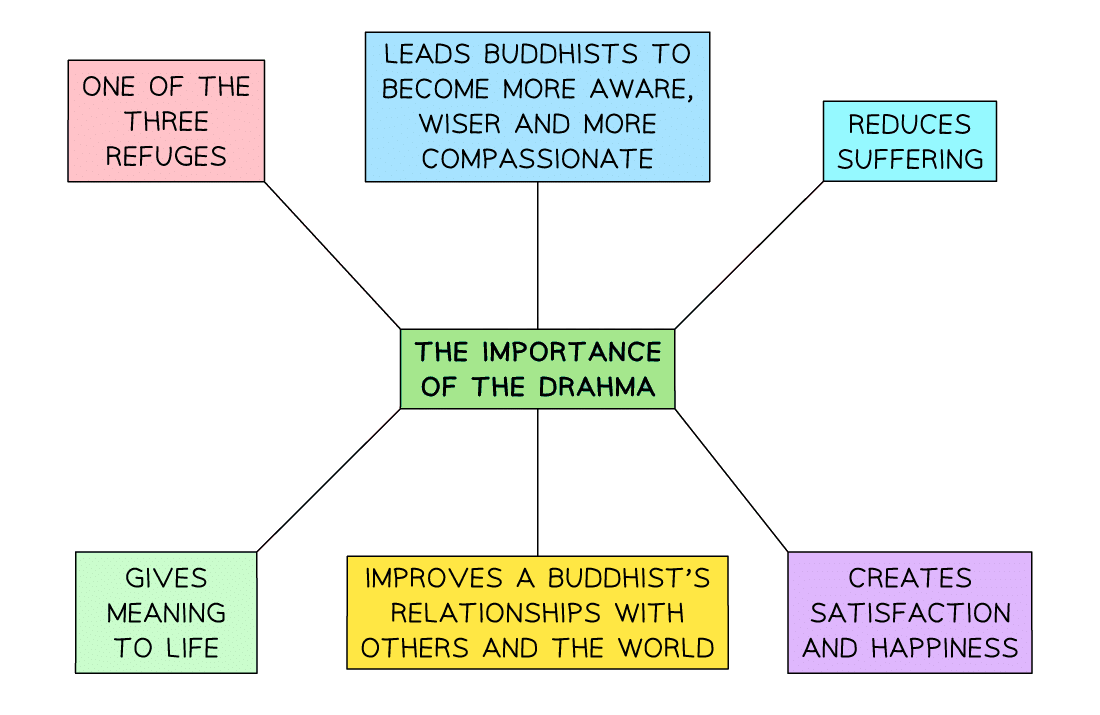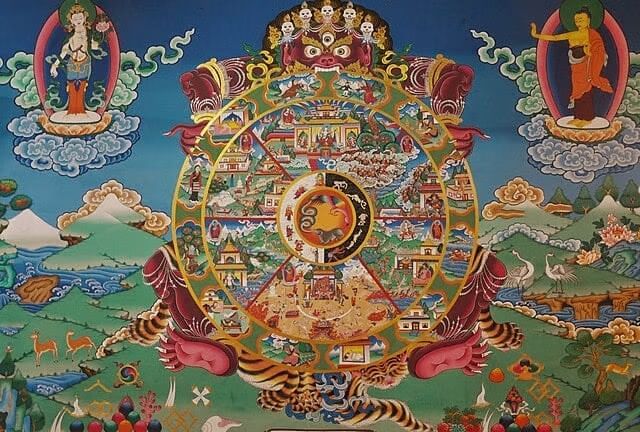Buddhism: The Concept of Dhamma (Dharma) | Religion, Philosophy & Ethics for GCSE/IGCSE - Year 11 PDF Download
| Table of contents |

|
| Introduction |

|
| The Significance of the Dhamma |

|
| The importance of the Dhamma |

|
| The Concept of Dependent Arising (Paticcasamuppada) |

|
| The Tibetan Wheel of Life |

|
Introduction
Dhamma, also known as Dharma, primarily refers to the teachings of the Buddha.
It encompasses the following meanings:
- The profound "truth" about the nature of existence that the Buddha comprehended upon attaining enlightenment.
- The disciplined path toward enlightenment includes the Eightfold Path.
- A universal "law," akin to a natural principle or the fundamental way things exist.
The Significance of the Dhamma
The Dhamma is one of the three core refuges (or jewels) in Buddhism, alongside the Buddha and the Sangha. Buddhists regard these refuges as the foundational values guiding their lives. The term "refuge" signifies a place of shelter, where Buddhists seek protection from suffering and guidance for their spiritual journey.
During religious gatherings, such as the ceremony marking someone’s entry into Buddhism, Buddhists often recite the following:
- “I take refuge in the Buddha.
- I take refuge in the Dhamma.
- I take refuge in the Sangha.”
The importance of the Dhamma

The Concept of Dependent Arising (Paticcasamuppada)
Understanding Dependent Arising
Dependent arising, or Paticcasamuppada, is the principle that:
- All things rely on supporting conditions.
- Everything is interconnected.
- Every action or event impacts everyone.
- Nothing exists independently.
This concept also highlights that everything, whether mental or physical, is in a perpetual state of flux due to ever-changing conditions.

The Tibetan Wheel of Life
The Tibetan Wheel of Life is a renowned depiction of how dependent arising relates to Samsara:
- The outer rim of the wheel illustrates the 12 links or stages (Nidanas) of this cycle.
- It portrays how humans are trapped in a cycle of birth, death, and rebirth, which may persist across multiple lifetimes.
- By adhering to the Buddhist path, particularly by overcoming craving, individuals can break free from this cycle, potentially attaining enlightenment and Nibbana.

|
172 docs|3 tests
|
FAQs on Buddhism: The Concept of Dhamma (Dharma) - Religion, Philosophy & Ethics for GCSE/IGCSE - Year 11
| 1. What is the significance of Dhamma in Buddhism? |  |
| 2. Can you explain the concept of Dependent Arising (Paticcasamuppada)? |  |
| 3. How does the Tibetan Wheel of Life illustrate Buddhist teachings? |  |
| 4. What role does the understanding of Dhamma play in achieving enlightenment? |  |
| 5. How do the teachings of Dhamma relate to daily life and ethical decision-making? |  |














